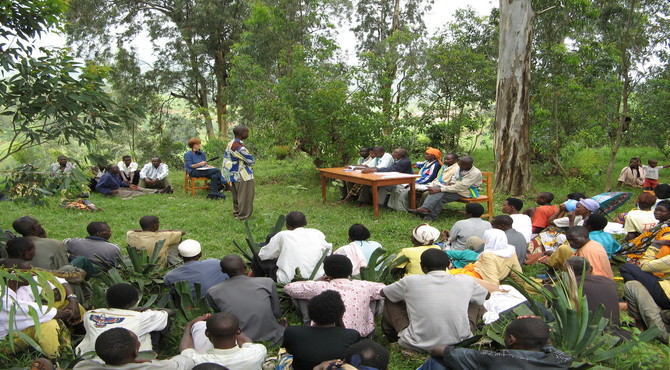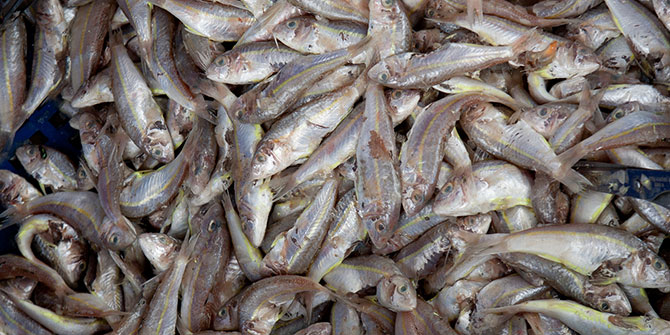Olu Fasan outlines why a single market for Africa is essential for the continent’s progress.
Africa’s quest for a single market dates back to the establishment of the Organisation of African Union (OAU) in 1963. The OAU, which brought together Africa’s newly independent nations, had at its heart intra-Africa economic integration. In fact, it aimed to emulate Europe by creating an African Economic Community, encompassing a single market and a customs union. In 1980, the OAU adopted the Lagos Plan of Action for Economic Development of Africa through the formation of an African common market. And in 1991, African heads of state signed the Abuja Treaty establishing the African Economic Community (AEC), with an ambitious six-stage roadmap to full economic integration, including the establishment of a customs union, a single market and an economic and monetary union.
However, while Europe moved rapidly, following the Treaty of Rome establishing the European Economic Community in 1957, and created the world’s largest customs union in 1968 and the world’s largest single market by 1992, African leaders made virtually no progress towards achieving their vision of economic integration. In 2002, the African Union (AU) was established, replacing the OAU, to give institutional and political momentum to the integration agenda. However, while the AU institutionally mimicked the European Union (EU), it did not, unlike the EU, accelerate the pace of Africa’s economic integration.
High trade costs drive low intra-Africa trade
Consequently, while Europe is the world’s most economically integrated continent, Africa is the least. Over 80 per cent of African trade is with the rest of the world, while intra-Africa trade accounts for just over 10 per cent of its total trade, compared with nearly 70 per cent in Europe, 54 per cent in North America, 51 per cent in Asia and 15 per cent in Latin America. Although the Lagos Plan of Action led to the creation of several Regional Economic Communities (RECs), such as ECOWAS in West Africa, COMESA in East Africa and SADC in Southern Africa, there is very shallow integration within virtually all the RECs (see table below) and hardly any harmonisation between them.
Given the lack of integration, Africa remains a fragmented continent, with very high trade costs. High tariff barriers (average 8.7 per cent) and, more perniciously, non-tariff barriers, such as cumbersome customs procedures (“thick” borders) and excessive regulations, make doing business across Africa extremely difficult. And they account for the low intra-Africa trade, pushing trade in Africa into predominantly informal channels and denying the continent the investments and scale economies it needs to industrialise, diversify its export base and develop regional value chains as a critical step to participating in global value chains. The solution, clearly, is economic integration that would engender tariff liberalisation, trade facilitation and trade policy coherence across the continent. As the African Development Bank (AfDB) once tweeted: “Regional integration is a development priority for Africa”.
AfCFTA as a significant step toward deeper integration
This was the rationale behind the creation of the African Continental Free Trade Area (AfCFTA). In 2011, the AU Assembly adopted the Action Plan for Boosting Intra-Africa Trade (BIAT), and at the AU Summit held in Addis Ababa in January 2012, African Heads of State adopted a decision to establish a Continental Free Trade Area. Under the Abuja Treaty of 1991, Africa should this year, 2019, create a Continental Customs Union and by 2023 establish a Continental Common Market. But those ambitions have been significantly slimmed down as AfCFTA is only a free trade area, inferior to either a single market or a customs union. That said, AfCFTA’s objectives are, inter alia, to “create a single market” and to “lay the foundations for the establishment of a Continental Customs Union”.
After two years of intense negotiations, the AfCFTA was launched in Kigali, Rwanda, on 21 March 2018, with 44 out of Africa’s 55 countries signing the agreement establishing the free trade area. The agreement, with a 253-page long consolidated text, covers trade in goods, trade in services and dispute settlement procedures, as well as related issues, such as rules of origin, customs and trade facilitation, non-tariff barriers and trade remedies. All of these are under Phase 1 of the agreement. The Phase 2 negotiations, scheduled to be concluded in January 2020, will cover competition, investment and intellectual property rights.
Benefits and obstacles to a successful AfCFTA
Several studies have shown that, if successful, AfCFTA would bring significant economic benefits to Africa. For instance, an UNCTAD report shows that AfCFTA would add $17.6bn (2.8 per cent) to Africa’s overall trade with the rest of the world, stimulating exports by $25.4bn (or 4 per cent). The agreement would also increase intra-Africa trade by $34.6bn (52 per cent), with a further $85bn if trade facilitation, rather than just tariff liberalisation, was addressed. Indeed, a study by Afreximbank went as far as saying that the volume of intra-Africa trade could amount to $400bn if AfCFTA led to market information being shared and widely available among African countries. What’s more, a successful AfCFTA would help integrate Africa’s significant informal trade into the formal sector and drive the development of regional value chain. All of these are without other potential advantages, such as Africa being a greater pull for foreign direct investment and having a significant bargaining power by leveraging a population of 1.2bn and a combined GDP of $3.4 trillion.

Image Credit: Wikimedia Commons CC BY-SA 4.0
Yet, there are several obstacles to AfCFTA’s success. The first is the lack of political will. For instance, although the AfCFTA agreement has now been signed by 49, including South Africa, securing the number of ratifications needed to bring it into effect has been very slow. To enter into force, there must be 22 ratifications. Although the agreement was supposed to enter into force in January this, so far only 14 ratifications have been secured. Given the slow ratification process in many African countries, securing the remaining ratifications could run into the first half of this year. Meanwhile, Nigeria, Africa’s largest economy, has not signed the agreement. President Buhari recently asked a committee to “develop short, medium and long-term measures to resolve the issues” raised by stakeholders. Whether he would sign the agreement after receiving the committee’s report remains uncertain.
But the disjointed response to the AfCFTA simply reflects the differing visions of free trade and economic liberalisation in Africa. The most enthusiastic about AfCFTA are the liberalising and reformist countries in Africa, such as Ethiopia, Rwanda and Ghana, which are also the continent’s fastest growing economies, while the less enthusiastic are the protectionist and hesitant reformers, such as Nigeria. Indeed, although AfCFTA is expected to remove tariff barriers on up to 90 per cent of goods traded between African countries, the agreement is full of carve-outs for sensitive products, priority products, exclusion lists, etc. Such exemptions and exceptions do not bode well for the emergence of a single market, since, once created, they can’t easily be removed and may, in fact, be “grandfathered”.
Then, apart from the reluctance to liberalise, AfCFTA is likely to be hindered by implementation challenges due to institutional and capacity deficits. This is evident in the poor implementation of REC and World Trade Organisation (WTO) agreements by many African countries. In a study of African RECs, Jaime De Melo, emeritus professor at the University of Geneva, pointed to the shallow integration of the RECs (see also table above), adding that: “Reducing intra-regional trade costs by tackling barriers to trade remains a challenge for successful integration across African RECs”. Similarly, most African countries are not even meeting the WTO’s basic procedural requirements, such as notifications, let alone comply with the substantive obligations. The REC and WTO experiences suggest that AfCFTA may be caught in similar implementation capability traps.
Africa needs to make AfCFTA work
To be sure, the AfCFTA is potentially a game-changer, as it could trigger far-reaching domestic policy and institutional reforms and become a credible forerunner of a single market and a customs union for Africa. However, so far, there is little evidence of the political will to make that happen, given how slowly and how cautiously African leaders and policymakers are moving towards economic integration. Yet Africa’s economic future lies in a single market and greater integration into the world. But, first, Africa must make AfCFTA work.
Dr Olu Fasan, a trade lawyer, is a Visiting Fellow and member of the International Trade Policy Unit at LSE.
The views expressed in this post are those of the author and in no way reflect those of the Africa at LSE blog, the Firoz Lalji Centre for Africa or the London School of Economics and Political Science.







reation of one africa market Africa faces unique challenges in combatting money laundering, such as limited resources, weak institutional frameworks, and cross-border illicit financial flows. As a result, implementing robust AML measures is crucial for African countries to protect their financial systems, ensure transparency, and foster economic integrity. It requires a multi-faceted approach involving strong regulatory frameworks, capacity building, international cooperation, and the adoption of advanced technologies. By prioritizing AML efforts, African countries can protect their economies, attract investment, and contribute to global efforts to combat financial crime